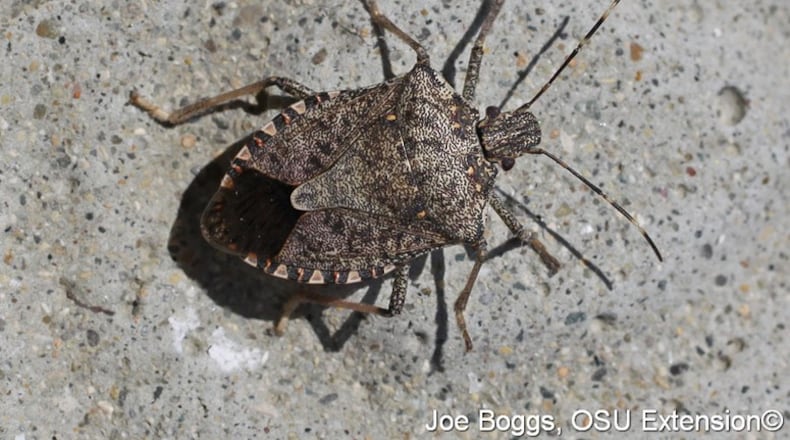I have fabric-type blinds on my windows, and I am not sure what to call them, but they’re sort of like little tunnels in the fabric. I looked one day and there were black dots all over the blinds. Brown marmorated stink bugs (BMSB) were taking up residence.
The worst part, besides the annoyance, is that two of them have bad odors when crushed – MALB and the BMSB. Each is quite distinct and noticeable. As I was sweeping the BMSB, their defensive odor was strong.
Spraying for these pests is not usually recommended or practical. Many of the chemicals don’t stay on the outside of the house for long, which is good. Once they all find an overwintering site, you don’t usually see more.
Check screens and doors for holes. I have a nice hole in the backdoor screen due to a few sweet grandkids. You know what they do when they find a little hole! I know BMSB comes in through there.
I also chuckle at the common recommendation of caulking all doors, windows, and other openings. There are ALWAYS openings, no matter how small, in all houses.
Fall mums have been spectacular around the Miami Valley. I don’t see as many planting Asters, but these are also a nice fall plant. Pollinators love these purple flowers.
Both can be planted in the garden, but be sure to water them until the ground freezes. This is the main reason why people lose these and other perennials in the fall: the root system isn’t established, and the roots dry out.
The surrounding ground may be damp, but the roots haven’t yet started to absorb water. Check them periodically, especially if the weather is warm and sunny.
The other problem is that since the roots aren’t established, plants will heave during freezing and thawing of the soil, and roots will be exposed in the winter. These roots die from exposure and dry out.
Prevent heaving by mulching (leaves, hardwood mulch, etc.) about 10-12 inches, covering the plant. This maintains soil temperature and prevents heaving.
Pamela Corle-Bennett is the state master gardener volunteer coordinator and horticulture educator for Ohio State University Extension. Contact her by email at bennett.27@osu.edu.
About the Author
